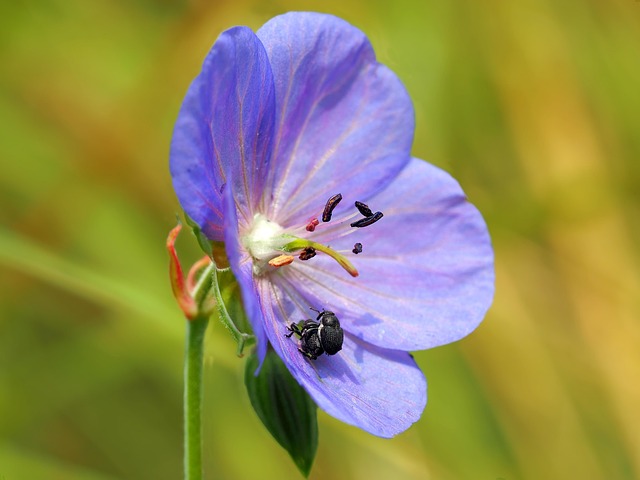Grain weevils, warm and moist environment-dwelling pests, cause significant damage by infesting stored grains. Early detection through regular inspections is key, with trained professionals offering grain weevils control services. These experts identify breeding sites, implement targeted treatments, and disrupt the pests' life cycle to safeguard agricultural products. Comprehensive inspections using advanced techniques like visual examinations, dogs, and infrared imaging are vital for successful grain weevil management. Sanitizing affected areas, treating with insecticides, ensuring proper storage practices, sealing entry points, and engaging professional grain weevils control services disrupts grain weevil populations and maintains a clean supply chain.
Grain weevils can wreak havoc on stored crops, causing significant economic losses. To mitigate these damages, thorough inspections are crucial for identifying activity and breeding sites early on. This article delves into understanding the behavior and breeding patterns of grain weevils, highlighting the vital role of regular inspections in effective control. We explore comprehensive inspection techniques and post-inspection actions, offering valuable insights for grain weevil management services.
Understanding Grain Weevils: Behavior and Breeding Patterns
Grain weevils are a common pest that can cause significant damage to stored grains and other agricultural products. Understanding their behavior and breeding patterns is crucial for effective grain weevil control services. These insects are known to breed in warm, moist environments, often hiding in cracks and crevices of storage facilities. They lay their eggs in infested grains, and the larvae feed on the seeds, causing substantial loss and contamination.
Regular inspections are vital to identify signs of weevil activity early. This includes checking for adult weevils, shed skins, or larvae present in stored products. Grain weevil control services employ trained professionals who can thoroughly inspect areas prone to infestation, pinpoint breeding sites, and implement targeted treatments. By understanding the pests’ behavior, these experts develop strategies to disrupt their life cycle, preventing future invasions and safeguarding agricultural goods.
The Role of Inspections in Early Detection
Through regular and thorough inspections, grain weevil activity and breeding sites can be identified early on, serving as a crucial component in their effective control. These inspections involve meticulous scrutiny of storage areas, grains piles, and other potential habitats, allowing for the swift detection of adult weevils, larvae, or eggs. By catching the infestation at its nascent stages, grain weevil control services can implement targeted and efficient strategies to eliminate the problem before it escalates.
The benefits extend beyond immediate removal; early detection provides valuable insights into the entry points and conditions that facilitated the infestation. This knowledge equips professionals with the tools to strengthen defenses, plug vulnerabilities, and prevent future recurrences. In essence, these inspections act as sentinels, safeguarding stored grains from the insidious damage caused by grain weevils.
Comprehensive Inspection Techniques for Effective Control
Comprehensive inspections are key in identifying and mitigating grain weevil activity. Professional pest control services employ a range of advanced techniques to ensure thoroughness, including visual examinations, sniffing dogs trained to detect specific weevil pheromones, and infrared imaging to uncover hidden infestations. These methods allow for early detection of breeding sites, eggs, larvae, and adults, which is crucial for effective grain weevils control services.
By combining these powerful tools, experts can navigate complex storage environments, identifying even the smallest signs of an infestation. This proactive approach not only saves crops from significant damage but also minimizes the need for intensive treatments later on. Early intervention through comprehensive inspections forms the cornerstone of successful grain weevil management strategies, providing peace of mind for farmers and food processors alike.
Post-Inspection Actions: Implementing Grain Weevil Management Strategies
After a thorough inspection, identifying grain weevil activity and breeding sites is crucial for effective management. The next step involves implementing tailored strategies to address the issue. This includes sanitizing and treating affected areas with approved insecticides, ensuring proper storage practices, and sealing entry points to prevent future infestations. Engaging professional grain weevils control services can provide specialized expertise and customized solutions. Regular monitoring and inspections are also vital to confirm the success of these measures and detect any early signs of reinfestation.
By combining meticulous post-inspection actions with ongoing surveillance, it becomes possible to disrupt grain weevil populations and create an inhospitable environment for their return. This proactive approach not only safeguards stored grains but also helps maintain a clean, pest-free supply chain.
Thorough inspections are key to managing and controlling grain weevil infestations. By understanding their behavior and breeding patterns, combined with effective inspection techniques, professionals can identify active sites and implement tailored strategies. Early detection through these comprehensive assessments is vital for minimizing damage and ensuring successful grain weevils control services. Remember, proactive measures and swift action are essential to maintaining a healthy grain supply.
